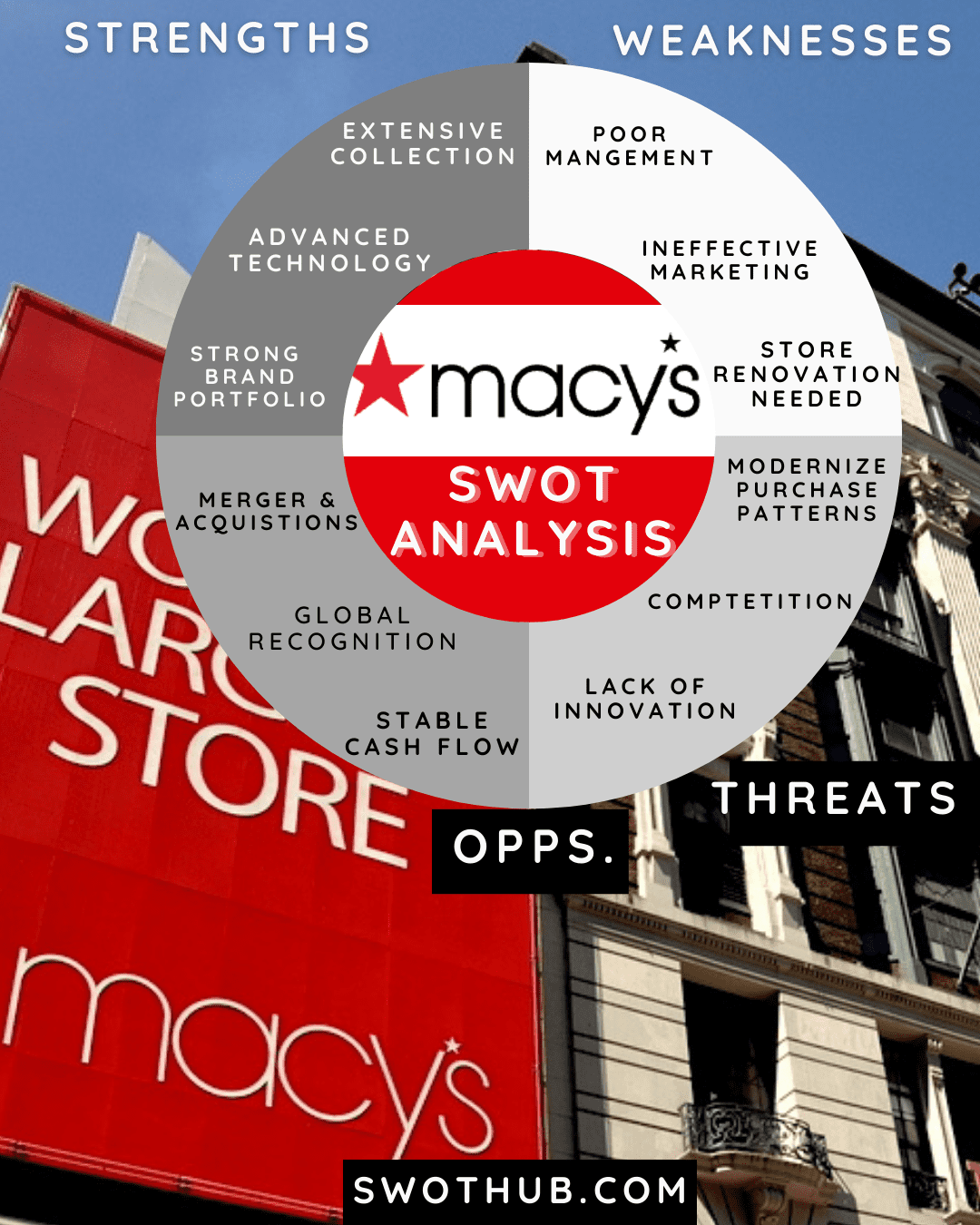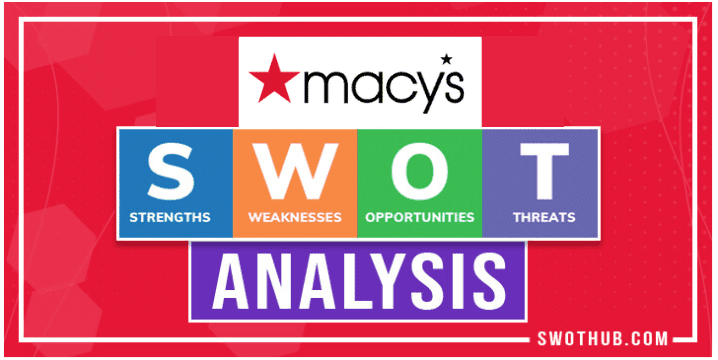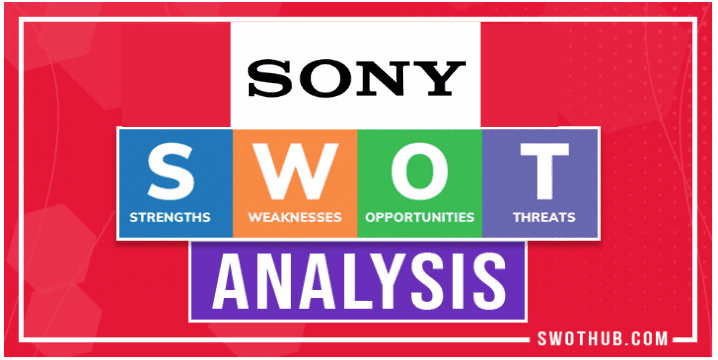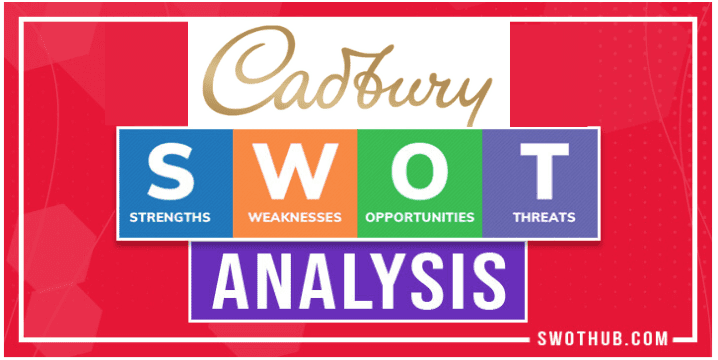Since 1858, Macy’s department store has been a retail giant around the world. In Macy’s SWOT Analysis, we will help break down the strengths, weaknesses, opportunities, and threats facing this mega brand and retailer. Similarly, to H&M fashion clothing store, their impact on how consumers shop goes back generations.
Table of Contents
Macy’s At-A-Glance
| Company Name | Macy’s |
| Industry | Retail |
| Founded | 1858 |
| Founders | Rowland Hussey Macy |
| CEO | Jeffrey Gennette |
| Headquarter | New York |
| Annual Revenue | US $25.709B (2022). |
| Website | https://www.macys.com/ |
Macy’s History
Omnichannel retailer Macy’s is headquartered in New York City. Macy’s Inc. (Macy’s) runs superstores, websites, and mobile apps. Rowland Hussey Macy founded the luxury department store chain known today as Macy’s (formerly R. H. Macy & Co.) in 1858. It joined Bloomingdale’s department store network in 1994 as a division of Cincinnati-based Federated Department Stores; after that, the parent company changed its name to Macy’s, Inc. in 2007. According to retail sales, Macy’s was the biggest department store chain in the US as of 2015.
The business sells clothing for adults, teenagers, and children, footwear, women’s clothing, cosmetics, home decor, and other items. Macy’s, Bloomingdale’s, and Bluemercury are three of the company’s retail brands. Macy’s customers can shop the way they live, anytime, through any channel, thanks to a strong e-commerce company, a comprehensive mobile experience, and national store footprint. Macy’s operates in the United States, the United Arab Emirates, the District of Columbia, Guam, and Puerto Rico.
New York City, New York, USA, is home to Macy’s corporate headquarters. As of October 29, 2022, Macy’s operated 510 stores (569 boxes). Its flagship store is located in the Manhattan neighborhood of New York City’s Herald Square, one of the world’s biggest department stores. The flagship store, which nearly fills a city block in New York, houses 1.1 million square feet of retail space in addition to additional space for offices and storage. Herald Square alone is worth almost $3 billion, according to estimates.
Macy’s Business Strategy & History
SWOT stands for strengths, weaknesses, opportunities, and threats. A method called SWOT analysis, which was created at Stanford in the 1970s, is often used in strategic planning. A Macy’s SWOT analysis is a simple yet successful framework for maximizing an organization’s strengths, addressing weaknesses, reducing threats, and seizing opportunities. The main goal of Macy’s SWOT analysis is to determine the company’s tactics to take advantage of outside chances, combat threats, build upon and safeguard strengths, and eliminate weaknesses.
Macy’s SWOT Analysis Strengths
An organization’s strong points are its strengths. The strengths of a company help in its growth in the marketplace. Macy’s SWOT analysis details Macy’s strengths.
Extensive Collection: Macy’s offers a variety of goods for men, women, and children, including clothing, accessories, cosmetics, perfumes, home furnishings, and other consumer goods. The business portfolio comprises Bluemercury, Bloomingdale’s, and Macy’s, which are famous worldwide.
Technological Innovation: Macy’s has grown its business by adopting innovative technology in the company. Additionally, the retailing company is boosting its revenues with the help of modern and innovative technology. By 2023, $10 billion of Macy’s sales are expected to come from digital sources.
Strong Brand Portfolio: Brand portfolio plays an important role in the company’s success. Macy’s has made investments over the years to develop a strong brand portfolio. Macy’s SWOT analysis only serves to emphasize this point. If the company wishes to grow into other product categories, this brand portfolio may be quite helpful.

Reliable e-commerce services: The retail industry is highly competitive. As a result, businesses must focus on both their offline and online. Macy’s services are trusted by customers, one of its biggest strengths.
Macy’s SWOT Analysis Weaknesses
Weaknesses are the areas where Macy’s can make improvements. A company’s weaknesses are the flaws that stop it from achieving its potential. In this section of Macy’s SWOT analysis; we will analyze some of the company’s weaknesses after discussing its strengths.
Limited expansion: Despite having a well-known name in the US retail industry, Macy’s hasn’t taken full advantage of it to accelerate its expansion. In the nations with great demand, they have not expanded. They are not very well-known in the nations where they do business. Macy’s has missed and squandered many chances to grow its market.
Poor Management: Unsuccessful management is a serious problem in every sort of firm, regardless of the sector. Management at Macy’s made poor choices that hurt their efforts to expand the company. A lack of effective strategies has prevented the organization from growing and providing a seamless service at the same time.
Ineffective marketing: The product marketing might have been much better. Even though the product is a sales success, its positioning and unique selling proposition are not well-defined, which puts it at risk for assaults from rivals in this market.
Unappealing stores: As Macy’s fast US development got out of hand and pushed its resources to the limit, the majority of its stores started to look messy and unattractive. Customer service quality dropped as a result of the difficulty in staffing the businesses. Customers no longer find Macy’s stores appealing since they have turned untidy.
Macy’s SWOT Analysis Opportunities:
Opportunities are chances for a company to grow. These changes naturally occur as a result of the surrounding environment. In the below section of Macy’s SWOT analysis, we will examine some of the opportunities for Macy’s to grow and diversify its business.
Mergers and Acquisitions: Since Macy’s has been in business for more than 160 years, there may be stagnation. They may take a creative approach to running their company and think about mergers and acquisitions as a way to grow it in a different industry. They can locate businesses that are a good fit for mergers or acquisitions.
Global Recognition: Macy’s has successfully established its brand and attained market leadership in the US. The moment is right for the business to go global and establish itself in other markets. In Macy’s SWOT analysis, it would benefit from increased global recognition, market share, and profitability.
Stable cash flow: Consistent free cash flow presents opportunities to invest in related product categories. With greater cash, the business may invest in new product categories and technological advancements. This ought to present Macy’s with an opening in other product areas.
Market potential: Macy’s may take into account developing economies for expansion as they have market potential. The demand for luxury goods is expanding quickly in emerging economies, including those in Asia, Africa, and Latin America. The brand can develop plans to break into these markets.
Macy’s SWOT Analysis Threats:
Factors that can harm the performance of any organization are known as threats. However, threats can come from a variety of factors, including increased rival activity, changing governmental policies, alternative products and services, etc. As we look at Macy’s SWOT analysis, we will discuss some of Macy’s threats it is facing currently.
Competition: Despite having a substantial market share, Macy’s must still keep an eye on its competitors to maintain its position. Several retailing companies are always competing with Macy’s for their market share, including Nordstrom, TJ Maxx, and Kohl’s. Competitors of Macy’s pose a danger to the company.
No innovative products: In Macy’s SWOT analysis, it has created many goods throughout the years, although many of them are reactions to developments made by other companies. Also, the supply of new items is irregular, which causes fluctuations in the sales figures over time that are both high and low.
Modification of Purchase Patterns: Consumer buying behavior is simultaneously changing nowadays. Retail enterprises face challenges from high unemployment and a declining economy. According to Macy’s sales data, consumers are not buying luxury goods.
Why Macy’s is so successful
Conclusion and Recommendations for Macy’s
It is concluded that Macy’s is the top retail chain store brand worldwide after carefully examining Macy’s SWOT analysis. A strong online presence, extensive collections, and an excellent brand portfolio are all positives for Macy’s business success. Some of the major difficulties are the current economic downturn, declining profitability, and the company’s goals not being carried out as intended. By utilizing its resources, Macy’s should raise and maintain its revenue.
After studying the above Macy’s SWOT analysis, it is recommended that we know that the firm has a large potential to expand in emerging nations. As a result, the business must take into account the fact that:
- The more worldwide expansion will result in higher sales and profits.
- Macy’s should also consider the need for novel items to compete with strong competitors.
- The future prosperity of Macy’s depends on technological development.
FAQs for Macy’s
What are Macy’s strengths?
Macy’s strengths lie in its strong brand recognition, a wide range of quality products, extensive retail footprint, and effective omnichannel presence. These elements contribute to its solid market position and customer loyalty.
2. What is Macy’s competitive advantage?
Macy’s competitive advantage stems from its established brand heritage, diverse merchandise mix, innovative marketing strategies, and robust online and in-store customer experience. This unique blend sets Macy apart in the competitive retail landscape.
3. What are Macy’s core competencies?
Macy’s core competencies include its expertise in retail operations, sophisticated supply chain management, effective customer relationship strategies, and a deep understanding of consumer trends. These competencies enable Macy’s to maintain relevance and competitiveness in the dynamic retail sector.
Due to the intense competition that Macy is presently dealing with, actions must be taken to obtain a competitive edge to increase and preserve its market share.





